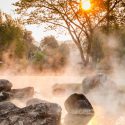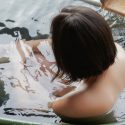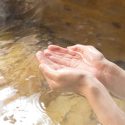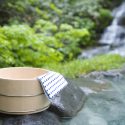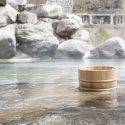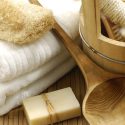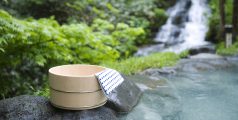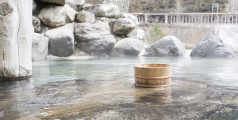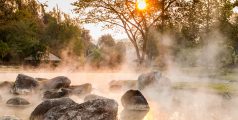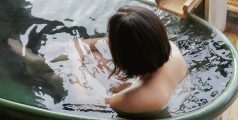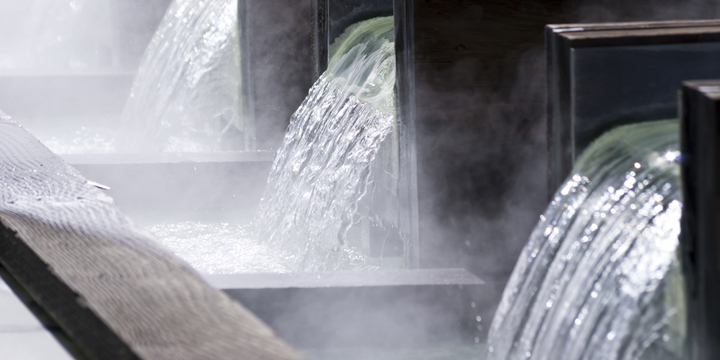
Beyond sulfur: uncovering the varied fragrances of Japanese onsen
Visitors to Japan often report a familiar, softly sulfurous smell as they approach a hot spring town. It might not be the most pleasant scent, but it certainly heralds the arrival of a relaxing bath. It is easy to associate that smell with all onsen or think that onsen have no odor simply because their potency is less than that of sulfur, but did you know that there are many more types of fragrances to be found at hot springs? For those willing to put their sense of smell to the test, there is a lot to learn about the origin and mineral composition of water in each onsen. This article explores a number of fragrances and what they tell us about the onsen water waiting to be enjoyed.
![]()
The smell of sulfur
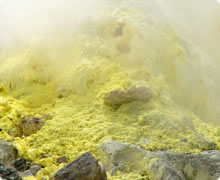 We start with the most common smell, sulfur, which is released from gunpowder, fireworks, and eggs past their prime. You can find it in onsen water that contains hydrogen sulfide; even if there is only a minuscule amount of hydrogen sulfide in the water, it still gives off the distinctive smell. Furthermore, if you were to dilute hydrogen sulfide in a vast expanse of water, the smell would be very pervasive even after the water is let out. Some onsen have a strong sulfuric smell while others have a weaker one but, in general, the milkier the water, the stronger the sulfuric smell.
We start with the most common smell, sulfur, which is released from gunpowder, fireworks, and eggs past their prime. You can find it in onsen water that contains hydrogen sulfide; even if there is only a minuscule amount of hydrogen sulfide in the water, it still gives off the distinctive smell. Furthermore, if you were to dilute hydrogen sulfide in a vast expanse of water, the smell would be very pervasive even after the water is let out. Some onsen have a strong sulfuric smell while others have a weaker one but, in general, the milkier the water, the stronger the sulfuric smell.
The smell of rusting iron
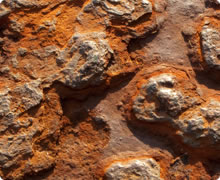 If the onsen water is a shade of brown or orange; leaves a mild reddish tinge on a towel; or gives off a smell akin to rust, it is high in iron. The smell won’t be as strong as that of sulfur but, if the iron concentration is even slightly higher than normal, it will cause the water to change color and result in a smell that is relatively easy to spot.
If the onsen water is a shade of brown or orange; leaves a mild reddish tinge on a towel; or gives off a smell akin to rust, it is high in iron. The smell won’t be as strong as that of sulfur but, if the iron concentration is even slightly higher than normal, it will cause the water to change color and result in a smell that is relatively easy to spot.
The smell of tar
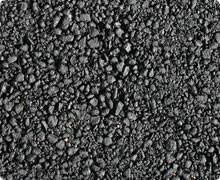 This smell reminds people of things such as rubber, oil, leather, or asphalt on a warm day. It is caused when onsen water passes through sedimentary deposits on the way to the surface, which impart their smell to the water. It is a mild fragrance, but likely to call to mind something similar to tar if you were to smell it closely.
This smell reminds people of things such as rubber, oil, leather, or asphalt on a warm day. It is caused when onsen water passes through sedimentary deposits on the way to the surface, which impart their smell to the water. It is a mild fragrance, but likely to call to mind something similar to tar if you were to smell it closely.
![]()
Oddities of the onsen world
The smell of minerals
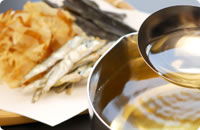 Seasoned Japan travelers might associate this distinctive smell with Japanese dried bonito or kombu broth. It is most frequently found in mountain onsen and thought to be caused by the impact of dense flora on the water. The smell of minerals is particularly delicate but if you have it pointed out to you, you are sure to get a sense of it.
Seasoned Japan travelers might associate this distinctive smell with Japanese dried bonito or kombu broth. It is most frequently found in mountain onsen and thought to be caused by the impact of dense flora on the water. The smell of minerals is particularly delicate but if you have it pointed out to you, you are sure to get a sense of it.
The smell of iodine
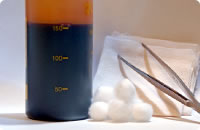 This smell is best described as a bit like mouthwash! Onsen water that smells of iodine has a deep red or orange hue that might remind you of an iodine mouthwash, too. Such onsen water is extremely rare throughout Japan but certainly an oddity worth exploring.
This smell is best described as a bit like mouthwash! Onsen water that smells of iodine has a deep red or orange hue that might remind you of an iodine mouthwash, too. Such onsen water is extremely rare throughout Japan but certainly an oddity worth exploring.
The smell of salt
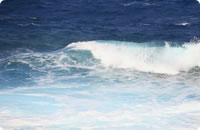 Some onsen waters give off the smell of the sea or, more accurately, the smell of sea water evaporating. Not surprisingly, this smell is found frequently in onsen by the seaside where there is a higher concentration of chloride in the onsen water. It brings to mind the sights and sounds of the sea.
Some onsen waters give off the smell of the sea or, more accurately, the smell of sea water evaporating. Not surprisingly, this smell is found frequently in onsen by the seaside where there is a higher concentration of chloride in the onsen water. It brings to mind the sights and sounds of the sea.
All these smells are relatively easy to distinguish and, especially in the case of minerals and salts, conjure up an atmosphere associated with the fragrance itself. Noticing one of the rarer smells at an onsen will banish for good the sole association of onsen with sulfur. Next time you are soaking in a hot spring, why not take a moment to smell the water and consider if its scent fits into some of the categories above? In doing so, hopefully you will enjoy nature’s gift a little more, and the waters will leave an impression long after you have dried off.
![]()
Meet the perfumers who have travelled Japan’s onsen to replicate each region’s waters.
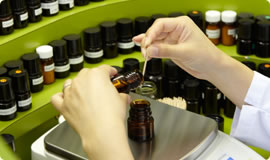 Once you are aware that onsen water has many more fragrances than simply sulfur, your bathing experience will have a subtlety that is impossible to dismiss. Some elements such as sulfur and iron can’t be included in bath additives as they might damage bathtubs, but smell is a vital element in bath additives, minerals, and salts. Bathclin has therefore replicated certain fragrances as accurately as possible in its Nihon no Meito “Famous Onsen of Japan” range, with the help of its world-class in-house perfumers.
Once you are aware that onsen water has many more fragrances than simply sulfur, your bathing experience will have a subtlety that is impossible to dismiss. Some elements such as sulfur and iron can’t be included in bath additives as they might damage bathtubs, but smell is a vital element in bath additives, minerals, and salts. Bathclin has therefore replicated certain fragrances as accurately as possible in its Nihon no Meito “Famous Onsen of Japan” range, with the help of its world-class in-house perfumers.
The perfumers first had to visit each area. In addition to experiencing the hot springs and assessing the composition of the water with their keen sense of smell, they also observed the surrounding scenery and climate, and surveyed the local produce. Only with all this in mind could they create the fragrance for each one accurately. For example, the iron-rich Nigorigo Onsen in Gifu Prefecture, central Honshu, has a subtle metallic hardness to its fragrance, which needs to be reflected in the finished product. Likewise, the area around Nozawa Onsen in Nagano Prefecture, also in central Honshu, is famous for its nozawana, a Japanese leafy vegetable, so this is reflected in the fragrance, too. Ultimately, at Bathclin, we want people who have been to the onsen recreated in the Nihon no Meito range to be transported back there when they sink into a Bathclin bath; that is the inspiration behind our continuing scientific research.






